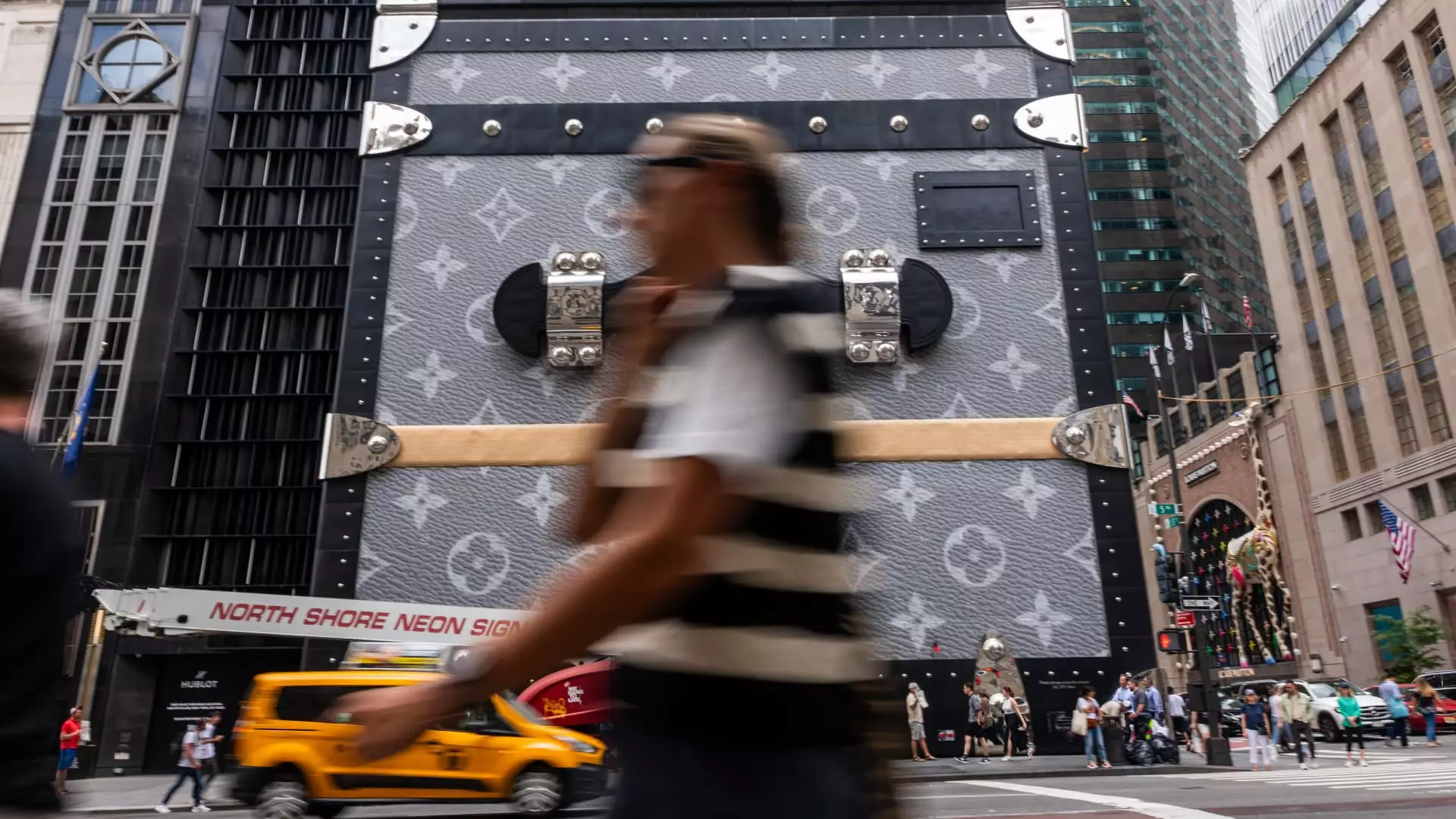In recent months, the luxury industry seems to be caught in a paradoxical dance—signs of recovery flickering on the horizon, yet underlying vulnerabilities remain glaringly apparent. Major brands like LVMH have shown resilience, but a closer look reveals that their so-called “improved” results are more a reflection of temporary shifts than sustainable growth. A 4% dip in sales for LVMH in the second quarter doesn’t precisely scream success, especially considering the expectations set by market analysts. The cheers from investors upon these figures are less a celebration of true revitalization and more a cautious optimism rooted in fleeting signals rather than concrete reform.
What the industry often neglects is that these moderate upticks in sales are heavily influenced by external factors such as fluctuating exchange rates and regional tourism patterns. The enthusiasm over positive news in markets like the U.S. and China must be tempered with skepticism about whether these trends are genuinely indicative of a resilient consumer base or merely reactions to short-term economic shifts and geopolitical uncertainties. The luxury market’s recovery appears, at best, fragile—a mirage that could dissipate with a slightest gust of economic turbulence or a shift in global political climate.
The Specter of Currency Fluctuations and Geopolitical Uncertainty
Currency fluctuations, particularly in Japan and the U.S., have played a pivotal role in shaping the current landscape. A rapid appreciation of the yen initially propelled tourist-driven luxury sales, creating an illusion of robust growth. Yet, as the yen stabilizes, these gains erode, exposing the vulnerability of luxury brands that rely heavily on international travel markets. Richemont’s 15% decline in Japan sales after a prior 59% surge exemplifies how quickly fortunes can reverse.
Similarly, efforts by brands like Burberry and Moncler to navigate the challenging environment mean little when the broader geopolitical landscape remains volatile. The looming threat of tariffs and trade tensions casts a long shadow over the promised rebound. Is U.S. demand genuinely strong, or are consumers merely rushing to buy before tariffs hike again? The ambiguity surrounding this question exposes a troubling truth: the apparent strength might be a byproduct of strategic stockpiling, not genuine increased demand.
This fragility highlights a central issue: the brand’s reliance on a handful of markets leaves them exposed to regional shocks. Expecting a long-term bounce based on short-term tourism or currency appreciation is optimism bordering on denial. The luxury sector cannot afford to ignore these deep-seated structural vulnerabilities, no matter how shiny the current numbers appear.
Price Increases: A Temporary Bandage or an Inevitable Strategy?
Faced with soaring costs driven by inflation and geopolitical pressures, luxury brands are contemplating, or already implementing, price hikes. But this strategy—often presented as a necessary measure—raises questions about the sustainability of such approaches. A steady 3-4% increase in prices might seem like a logical response to inflation, yet it risks alienating consumers who are already wary of the ever-increasing cost of luxury.
LVMH’s stance that price hikes must be coupled with product enhancement illustrates the frustration and strategic dilemma brands face: raise prices without diluting perceived value. However, many consumers are becoming more discerning, less willing to accept incremental increases without tangible improvements or added exclusivity. Moreover, the promise of “refined” products, while ideal in theory, is increasingly difficult to deliver amid rising raw materials costs and supply chain disruptions.
This delicate balancing act underscores a deeper challenge—the very notion that high-end consumers are immune to economic pressures is a myth. Their loyalty hinges on perceived craftsmanship and exclusivity, not just brand prestige. Artificially inflating prices risks commodifying the very luxury these brands seek to uphold, thus fueling a potential decline in brand desirability and consumer trust.
The False Promise of Diversification and Category Shifts
Luxury brands often talk about diversification—shifting focus from flagging categories like jewelry or fashion to more resilient segments like leather goods. Yet, the reality is more complex. While brands like Hermès thrive with leather products, others, like Cartier or LVMH’s jewelry maisons, face significant headwinds. The assumption that jewelry and watches will stabilize or grow solely because of certain brands’ successes is overly simplistic.
Moreover, the obsession with category mix masks the underlying issue: consumer preferences are shifting, sometimes unpredictably. The rise of “masstige” or accessible luxury poses a threat to traditional high-end brands, potentially diluting their cachet. The industry’s fixation on “category dominance” risks overlooking the fundamental change in what consumers value—authenticity, sustainability, and a genuine connection to brand ethos.
Investors and executives alike praise brand appeal and product revival strategies, but these are mere Band-Aids. The real question is whether luxury can evolve beyond superficial reinventions or whether it is doomed to cyclical, short-lived recoveries that mask deep-seated decline. The allure of luxury’s glamour may distract stakeholders from the uncomfortable truth: the market’s foundation is shakier than it appears.
The Dangerous Illusion of a Persistent Recovery
All these signals point to one harsh reality: the supposed recovery in the luxury sector is, at best, a carefully curated illusion. The sector’s reliance on external factors—currency trajectories, tourism, tariffs—means it remains vulnerable to shocks that can swiftly erase any gains. The narrative of resilience is convenient for corporate executives and investors eager for positive headlines, but it does little to address the systemic issues at play.
In truth, luxury brands are battling a crisis of identity—struggling to reconcile their traditional values with a rapidly changing global economy. Their attempts at price increases, product refreshes, and market diversification are reactive measures rather than proactive solutions. Until they confront the core structural challenges—the overdependence on volatile markets, the impatience of modern consumers, and the accelerating push for sustainability—they will continue to operate on a fragile footing.
In the grand scheme, the luxury landscape is less a reflection of genuine growth than a mirror to the market’s desperate attempt to mask its vulnerabilities behind the veneer of exclusivity and prestige. The illusion of recovery is just that—a fragile veneer that could shatter without warning.

